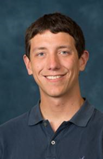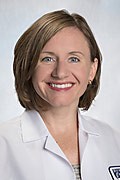A Spotlight on Paralympics and Adaptive Sports
 Written by Martin Bomalaski, MD
Written by Martin Bomalaski, MD
University of Michigan
Class of 2017
Edited by Jason Leung, MD
University of Michigan
Class of 2017
In the summer of 1948, a small group of British World War II veterans came together for the first International Wheelchair Games, which later evolved into the Paralympic Games. Today, the Paralympics serve as the world’s largest stage to showcase the highest level of achievement for disabled athletes. The Paralympic Games are held every 4 years, following the Olympic Games, and are governed by the International Paralympic Committee (IPC). Paralympic games also run for both winter and summer seasons. This committee has also established 10 disability categories, including physical (e.g., impaired muscle power, loss of limb, ataxia, short stature), visual, and intellectual impairment to divide athletes. Based on these categories, the IPC now uses functional classification (regardless of medical diagnosis) to help group athletes for competition.
As physiatrists, we are especially well suited to serve the specific medical and rehabilitative needs of the Paralympian. It has likely occurred to many PM&R residents what a unique and extraordinary experience it would be to volunteer with the Paralympics. On that note, let’s meet 2 great examples of physiatrists who are deeply involved in the world of Paralympics and adaptive sports.
 Cherie Blauwet, MD
Cherie Blauwet, MD
Sports Medicine at Brigham and Women’s/Spaulding Rehabilitation
Chairperson – IPC Medical Committee
Dr. Blauwet completed her fellowship in sports medicine at Rehabilitation Institute of Chicago (RIC) in 2014. She has unique insight into the world of adaptive sports, both as an athlete and a physiatrist. She sustained a spinal cord injury as a young girl and later became involved in wheelchair racing. Among her many accomplishments, she has won both the Boston and New York City marathons, and is a 7-time medalist in the 2000 and 2004 Paralympic Games. She currently serves as the chairperson for the International Paralympics Committee’s Medical Committee, and practices sports medicine at Spaulding Rehabilitation.
Her advice to residents is simple: “Get involved. Adaptive sports are all around us. Countless communities across the country have adaptive sports teams. Get involved at the community level. Ask how you can help, medical or otherwise. In general, many of these teams are medically underserved and would benefit from having access to a medical provider during training and events. Learn the culture of the sport, and gradually start volunteering at larger regional and national events. From an academic aspect, find opportunities for writing and publication on topics related to adaptive sports. This is a great opportunity to develop as a physician,” says Dr. Blauwet, adding, “Seek out other physicians involved in adaptive sports who can serve as mentors. We’re a small community.”
 Suzy Kim, MD
Suzy Kim, MD
U.S.A. Paralympic Team Physician 2009-present
Dr. Kim has always been an active triathlete, but during medical school, she was in a surfing accident which resulted in a spinal cord injury. A determined Dr. Kim finished her physical rehabilitation in 10 months, returned to finish medical school, and went on to graduate residency from RIC. She continues to compete at a high level in adaptive sports.
She further served as the team physician for the U.S. Paralympic track and field team from 2009 to 2013. She reflects with enthusiasm, “I feel unbelievably blessed to work with these amazing athletes. I may be biased, but physiatrists are the perfect physicians to provide medical care unique to their respective disabilities and sports specific needs. From prosthetic related issues to unique autonomic and cardiovascular considerations, my physiatric training was invaluable.” Dr. Kim has traveled with the United States Olympic Committee (USOC) Sports Medicine Staff to the Guadalajara and Toronto for the ParaPan American Games in 2011 and 2015 as well as London for the Paralympic Games in 2012.
Similar to Dr. Blauwet, her suggestion to current residents is, “Get involved! Hopefully, for most PM&R residency programs there’s an adaptive sports program/club locally. Volunteer to provide protective equipment, and cover practices and competitions.” She also points out that the USOC website has links to local designated Paralympic sport clubs across the country. “If there are specific sports people are interested in, contact that sport’s coach.”
How does a PM&R resident get involved?
Unfortunately, physicians are not allowed to become a medical volunteer for the United States Olympic Committee until they have been practicing for at least 5 years post-residency. However, don’t let this be a discouragement. The answer lies in adaptive sports, of which the Paralympics is only one manifestation. Disabled athletes have adapted a variety of well-known sports, as well as creating some that are completely original. Almost all sports have an adapted version. For example, official Paralympic sports include archery, canoeing, judo, table tennis, volleyball, etc. A full list categorized by impairment groups can be found below in the resources section.
Steven Makovitch, PGY4 resident at the Rehabilitation Institute of Chicago, recalls that early in his residency he had an interest in getting involved but wasn’t sure how. Even at a large PM&R center such as RIC, he didn’t know what opportunities were available to him. However, Dr. Makovitch took the above advice to heart and ended up volunteering with a local wheelchair basketball team in Chicago. He not only found it to be one of the more valuable experiences during his residency, but also had a lot of fun along the way.
Even though residents cannot volunteer for the Paralympics at this stage in our career, there are plenty of opportunities in the community! It is never too soon to start supporting our local athletes. If there’s one thing that Dr. Kim, Dr. Blauwet, and Dr. Makovitch can agree on, it’s how important it is to get involved at the local level, learn the culture, find out how you can contribute, and help continue the symbiotic collaboration between PM&R and Paralympic athletes.
Be sure to lookout for the upcoming 2016 Summer Paralympics in Rio de Janeiro!
Resource Links:
Official link for the Paralympic games
Official site for Team USA
List of Paralympic sports
American Association of Adapted Sports Programs